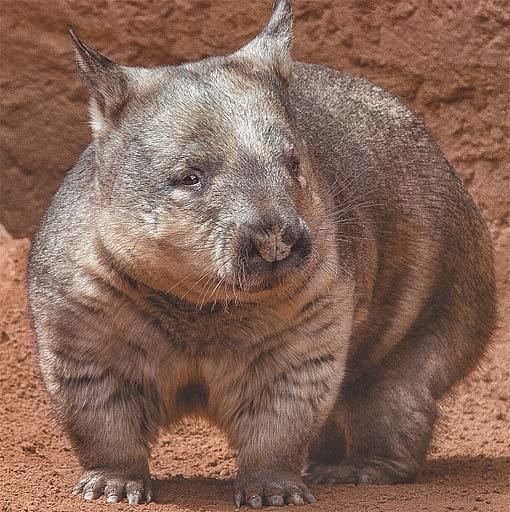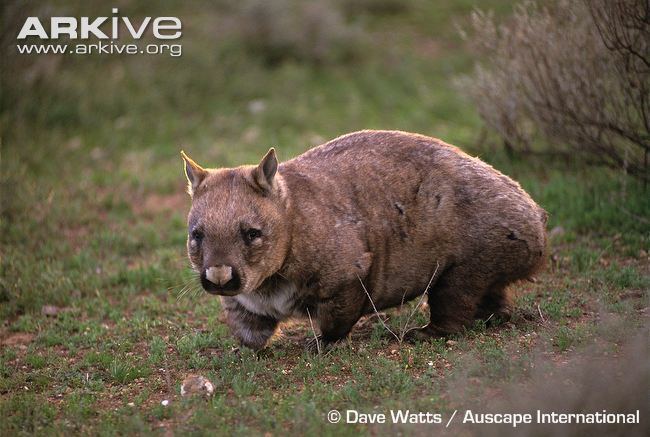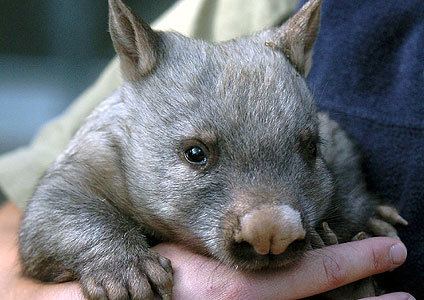Genus LasiorhinusGray, 1863 Higher classification Lasiorhinus | ||
 | ||
Similar Southern hairy‑nosed wombat, Lasiorhinus, Common wombat, Bridled nail‑tail wallaby, Wombat | ||
Northern hairy nosed wombat uni assignment
The northern hairy-nosed wombat (Lasiorhinus krefftii) is one of three extant species of wombats. It is one of the rarest land mammals in the world and is critically endangered. Its historical range extended across New South Wales, Victoria, and Queensland as recently as 100 years ago, but it is now restricted to one place, a 3-km2 range within the 32-km2 Epping Forest National Park in Queensland. In 2003, the total population consisted of 113 individuals, including only around 30 breeding females. In the last census taken in 2013, the estimated population was 196 individuals, with an additional 9 individuals at the Richard Underwood Nature Refuge at Yarran Downs near St. George in southern Queensland. In recent years, the population has experienced a slow but steady increase to an estimated 230 individuals in 2015.
Contents
- Northern hairy nosed wombat uni assignment
- Northern hairy nosed wombat joey
- Description
- Behaviour
- Nomenclature
- Classification
- Conservation
- References

Northern hairy nosed wombat joey
Description

In general, all species of wombat are heavily built, with large heads and short, powerful legs. They have strong claws to dig their burrows, where they live much of the time. It usually takes about a day for an individual to dig a burrow.

Northern hairy-nosed wombats have bodies covered in soft, grey fur and even have fur on their noses, a trait that sets them apart from the common wombat. They have longer, more pointed ears and a much broader muzzle than the other two species. Individuals can be 35 cm high, up to 1 m long and weigh up to 40 kg. The species exhibits sexual dimorphism, with females being somewhat larger than males due to the presence of an extra layer of fat. They are slightly larger than the common wombat and able to breed somewhat faster (giving birth to two young every three years on average).

The northern hairy-nosed wombat's nose is very important in its survival because it has very poor eyesight, so it must detect its food in the dark through smell.
Behaviour
The northern hairy-nosed wombat is nocturnal, living underground in networks of burrows. They avoid coming above ground during harsh weather, as their burrows maintain a constant humidity and temperature. They have been known to share burrows with up to 10 individuals, equally divided by sex. Young are usually born during the wet season, between November and April. When rain is abundant, 50-80% of the females in the population will breed, giving birth to one offspring at a time. Juveniles stay in their mothers' pouches for 8 to 9 months, and are weaned at 12 months of age.
The fat reserves and low metabolic rate of this species permit northern hairy-nosed wombats to go without food for several days when food is scarce. Even when they do feed every day, it is only for 6 hours a day in the winter and 2 hours in the summer, significantly less than a similar-sized kangaroo, which feeds for at least 18 hours a day. Their diet consists of native grasses: black speargrass (Heteropogon contortus), bottle washer grasses (Enneapogon spp.), golden beard grass (Chrysopogon fallax), and three-awned grass(Aristida spp.), as well as various types of roots. The teeth continue to grow beyond the juvenile period, and are worn down by the abrasive grasses they eat.. Its habitat has become infested with African buffel grass, which outcompetes the native grasses on which the wombat prefers to feed.
Nomenclature
The genus name Lasiorhinus comes from the Latin words lasios, meaning hairy or shaggy, and rhinus, meaning nose. The widely accepted common name is northern hairy-nosed wombat, based on the historical range of the species, as well as the fur, or "whiskers", on its nose. In some older literature, it is referred to as the Queensland hairy-nosed wombat.
Classification
The northern hairy-nosed wombat shares its genus with one other extant species, the southern hairy-nosed wombat, while the common wombat is in the genus Vombatus. Both Lasiorhinus species differ morphologically from the common wombat by their silkier fur, broader hairy noses, and longer ears.
The koala is the most closely related marsupial to wombats, and is categorised in the same suborder, Vombatiformes.
Conservation
Threats to the northern hairy-nosed wombat include small population size, predation, competition for food, disease, floods, droughts, wildfires, and habitat loss. Its small, highly localised population makes the species especially vulnerable to natural disasters. Wild dogs are the wombat's primary predator. The habitat at Epping Forest National Park is now well-protected for better chances of survival.
Due to these threats, the northern hairy-nosed wombat is listed as "endangered" by the Australian Species Profile and Threats Database (SPRAT), and "critically endangered" by the IUCN. Its range is restricted to about 300 ha (750 acres) of the Epping National Forest in east-central Queensland, 120 km northwest of Clermont.
To combat the vulnerability of this species, a number of conservation projects have been put into action over recent years. One example was the construction of a two-metre-high, predator-proof fence around 25 km2 of the park in 2000. A second population of wombats has been established at Richard Underwood Nature Refuge at Yarran Downs near St. George in southern Queensland. This second population was established in 2008 and is also in a reserve surrounded by a predator-proof fence. Within Epping Forest National Park, increased attention and funds have been given for wombat research and population monitoring, fire management, maintenance of the predator-proof fence, general management, and control of predators and competitors, and elimination of invasive plant species. In addition, the species recovery plan of 2004 to 2008 included communication and community involvement in saving the species and worked to increase the current population in the wild, established other populations within the wombat's historical range, and worked with zoos to establish a captive husbandry program. Also, a volunteer caretaker program allows volunteers to contribute in monitoring the population and keeping the predator fence in good repair. Finally, DNA fingerprint identification of wombat hairs allows research to be conducted without an invasive trapping or radio-tracking program. Due to the combined efforts of these forces, the northern hairy-nosed wombat population is slowly making a comeback.
